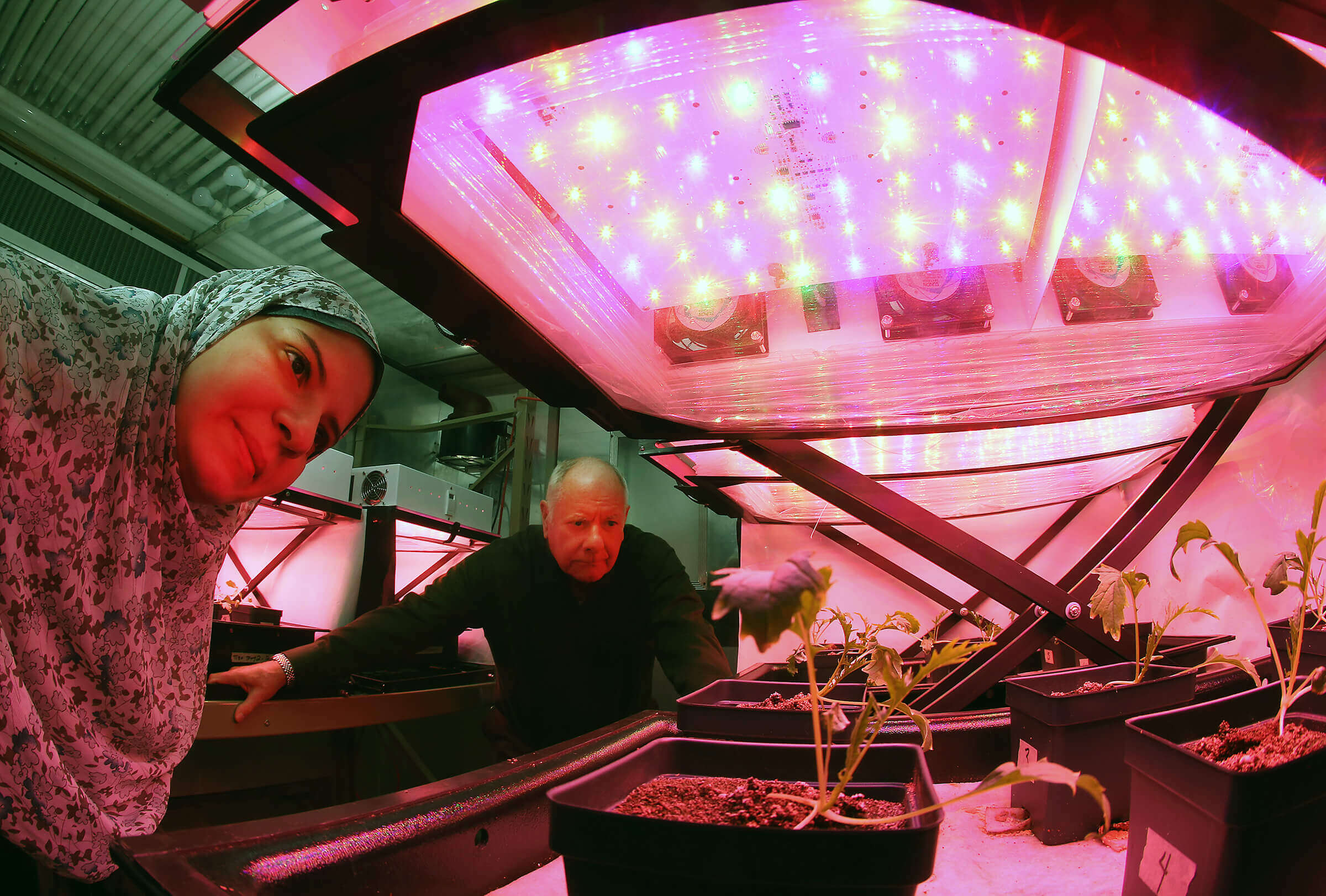Getting to Mars may happen only if we can grow food in space
Decades after the last human set foot on the moon, NASA is contemplating setting up a permanent base there or sending astronauts to Mars. Accomplishing those goals, however, will require a few green thumbs.
The cost to send a pound of anything into low Earth orbit is estimated at about $10,000, and much more than that beyond. That makes sending food to feed astronauts for months extremely expensive. However, if they could grow their own food and use closed systems to recycle water and oxygen, trips to the moon and Mars would become much more feasible.
That’s where Purdue’s Cary Mitchell comes in. For more than 40 years, he has led efforts to improve human ability to grow food in space – from improving lighting for crops to testing the ability to grow leafy greens, fruits and vegetables that will keep astronauts nourished and satisfied on their long trips.
Mitchell began his career at Purdue interested in the effects of mechanical stresses on plant growth. He noticed that shaking a tomato plant caused it to dwarf, and touching the near side of a plant’s stem caused it to grow toward him. NASA invited him to speak at a symposium in the 1970s and eventually introduced him to the agency’s new space biology program, which funded his research for an extended period.
“We were looking at very basic questions back then. We wanted to know how plants would orient in space, for example. Without gravity, how would roots know to grow down and shoots up?” said Mitchell, a professor of horticulture. “Since then, we’ve spent a lot of time working on how to light plants in space and on particular varieties of plants that are feasible to grow there.”
Soon, Mitchell became involved in more projects through NASA’s Controlled Ecological Life Support Systems (CELSS) program, which had a goal of closing loops for advanced life support systems and using plants not only for food, but for production of oxygen and reclamation of water. While many scientists were interested in growing grains and protein, Mitchell thought astronauts might enjoy a fresh salad from time to time, so he focused on identifying lettuces that would grow well in the conditions one might find in a space shuttle or on a space station.
In the 1990s and early 2000s, the space agency started NASA Specialized Centers of Research and Training (NSCORT). Mitchell led the university’s efforts and was instrumental in having the first and third NSCORTs led by Purdue. These centers brought together researchers in agriculture, engineering, and science to answer fundamental questions about advanced life support in space.
One of those fundamental questions is about how to light plants in space. The traditional supplemental lights used in greenhouses tend to be hot and consume significant amounts of energy. Plants in space need to be packed closely together since the growing area is at a premium. Mitchell thought there had to be a better way to get light to all parts of the plants, so he experimented with LED, or light-emitting diode, lights that could be placed under plants’ canopies.
“You’re really limited in lighting plants overhead in space. When you have branching plants growing together, you get no light from overhead underneath,” Mitchell said. “We did the first proof of concept with blue and red LED “lightsicles” that could light plants from the side within the canopy. The LEDs were cool enough that you could touch them and they wouldn’t scorch the plants. And they gave us 50 percent to 75 percent energy savings for the same growth.”
Mitchell is working on LED arrays that focus light in specific places on plants to optimize energy use. Gioia Massa, who did postdoctoral research in Mitchell’s lab and assisted with this project, now works as a life sciences project scientist at NASA’s Kennedy Space Center. They are working together with leafy greens and dwarf tomatoes, and astronauts on the International Space Station are taste-testing the fruits of their labor - literally.
Massa said Mitchell has been instrumental in many of the most important research areas regarding advanced life support and food in space.
“He’s really been there from the beginning of space biology research and space horticulture research. He’s kind of the founding father in this area,” Massa said. “His research has changed over the years as new technology has become available, and he has been influential in deciding the direction of the field.”






